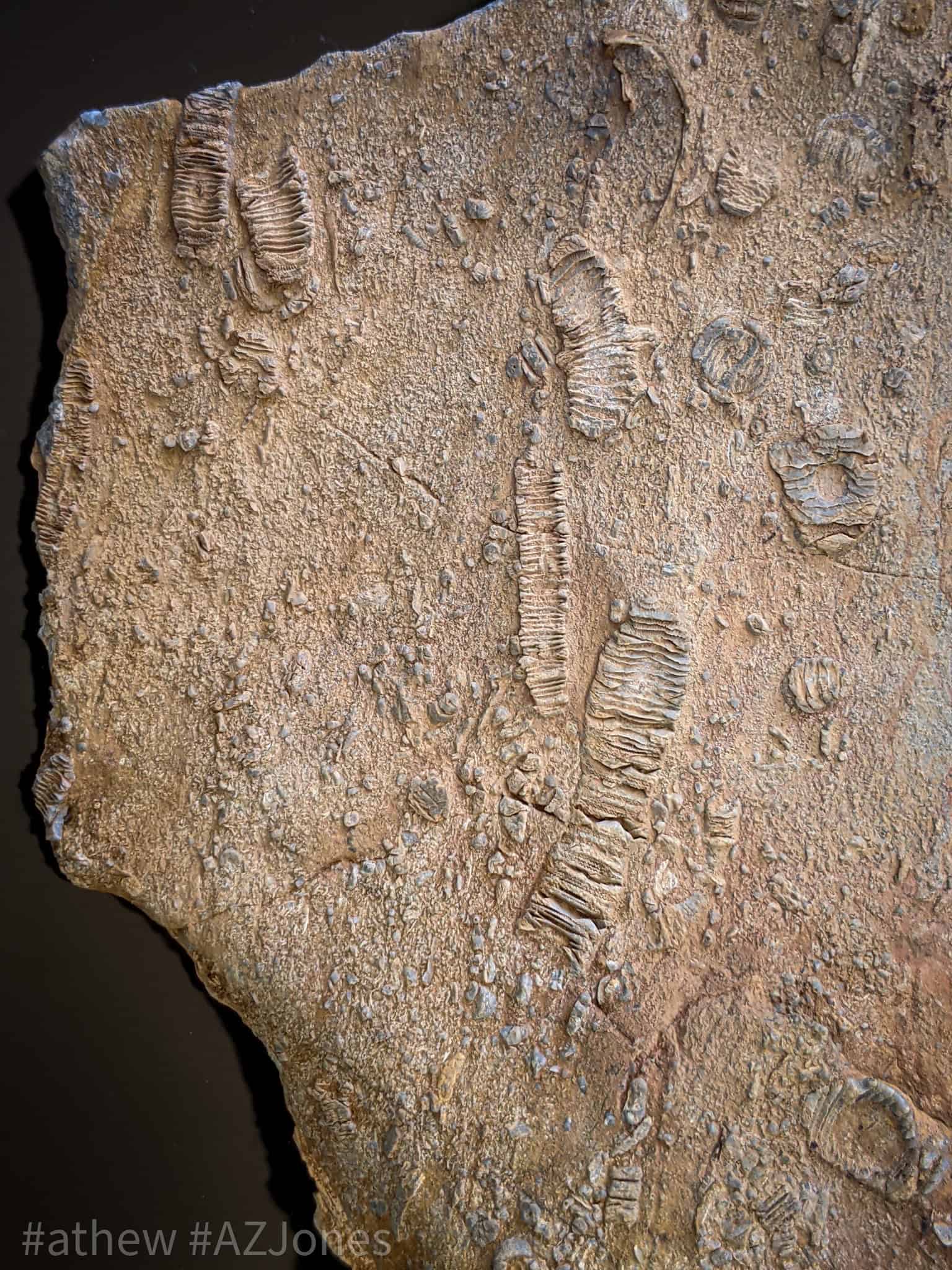Found in the mountains overlooking a small town not far outside the Salt River Valley, these are the fossilized remains of an ancient sea creature known as a Crinoid. With a flower-like appearance, these are often referred to as sea lilies. In fact, the word crinoid is derived from the Greek word “krinon,” meaning “a lily.” It’s not hard to imagine these once having blanketed the seafloor, swaying to the currents, as a field of flowers might sway in the wind, today. However, these are not plants but are marine animals.


Crinoids are bottom feeders and would have fed on plankton and algae from the seafloor, just as the living variations do today. Coming from the family echinoderm, it is related to starfish, sand dollars, sea urchins, and sea cucumbers—however, it is the least understood of its family, even being one of the most abundant in fossilized remains.


Each of the disc-shaped pieces that comprise the stem (column) are bits of endoskeleton, stacked one upon the other, and hollow in the middle. The connective tissue that bands each piece together decays quickly after death. The largest fossil stem ever recovered was a staggering 130 ft!

The photo below is probably my favorite piece because it shows the stratification over time. You can actually see from top to bottom, how they were preserved in the sediment. Notice the shell? Truly amazing.



Today there are around six-hundred known species, still living.
I hope you enjoyed that read! To stay up-to-date on all things Arizona Jones, be sure to subscribe to my weekly newsletter! And, if you like my work, please support me, by visiting my online store, and sharing my articles on your preferred social media!



